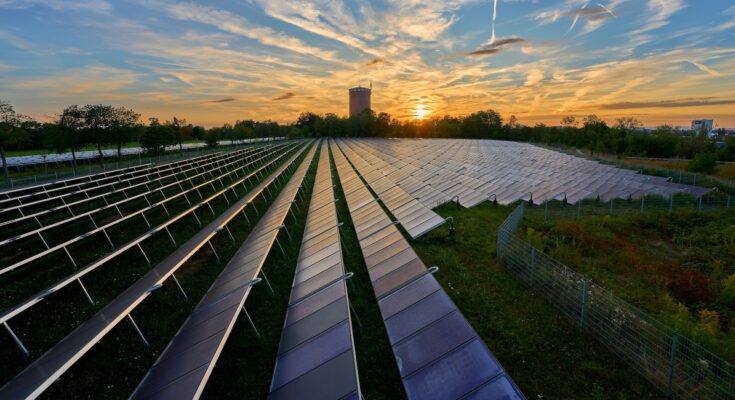Next-gen thermal solar technology may be closer than it appears thanks to plastic rearview mirrors.
According to reports from New Atlas and the University of South Australia, UniSA experts have partnered with researchers from Impacts Renewable Energy and Charles Sturt University on a renewable project that cuts sun reflector pricing by as much as 40%.
Reflected and captured heat can be used in industrial settings or to create steam to produce electricity, UniSA explained.
“Industrial process heat accounts for a staggering 25% of global energy use and 20% of CO2 emissions,” project lead Dr. Marta Llusca Jane said in a news release, which cited grain drying and soil and wastewater sterilization as examples of jobs that require high heat.
Solar thermal works by focusing a vast array of mirrors on a central collection tower that collects heat at up to 754 degrees Fahrenheit. It’s different from common solar panel tech that converts solar radiation into electricity, per New Atlas’ description.
It’s an energy source already operational elsewhere. A site in China has 30,000 mirrors that send sunlight to two towers. Molten salt is used to store some of the energy, sort of like a battery.
The Australian breakthrough comes after a decade of research into durable coatings, which are needed to make the plastic highly reflective. It’s 50% lighter than traditional glass mirrors, and the coating is made from durable aluminum silica, per the reports.
The experts plan to test two groups of 16 panels, which appear in a UniSA rendering to be rectangular and taller than an average human. In the second stage, larger systems will be tested with industrial partners. The goal is international commercialization, the report continued.
The innovators think that their invention is arriving right on time.
“We’re seeing record fossil fuel prices and increasing pressure for industries to decarbonize,” Professor Colin Hall said in the UniSA release. “This … solution is uniquely suited to Australia’s hot, dry climate and offers a viable pathway to zero-emissions process heat.”
TCD Picks » Upway Spotlight
💡Upway makes it easy to find discounts of up to 60% on premium e-bike brands
By cutting air pollution from industry and energy production, the tech could greatly help reduce the production of harmful heat-trapping gases that warm the planet and increase the risks of severe weather, such as extreme heat waves. Excessive heat is even making some places unlivable, as NASA observed.
For its part, solar panel technology is also improving and can be leveraged domestically. Installing a solar setup at home can reduce or even eliminate utility bills, with savings even confirmed by a U.S. government study.
EnergySage is a trusted, free service that can help you unlock all the incentives, as well as find the right pro installer. The company’s guidance can save you up to $10,000 on installations.
Community solar is another option to access pollution-free energy that doesn’t require panels to be installed at home. Customers with an average monthly power bill of $125 can lower utility costs by up to $150 annually.
The lighter, car mirror-inspired reflectors from Australia could soon provide an improved way to harness the sun’s heat.
“By proving this technology in the field, we are laying the foundation for a cleaner, more resilient energy system across Australia and beyond,” Dr. Llusca Jane said.
Join our free newsletter for weekly updates on the latest innovations improving our lives and shaping our future, and don’t miss this cool list of easy ways to help yourself while helping the planet.



